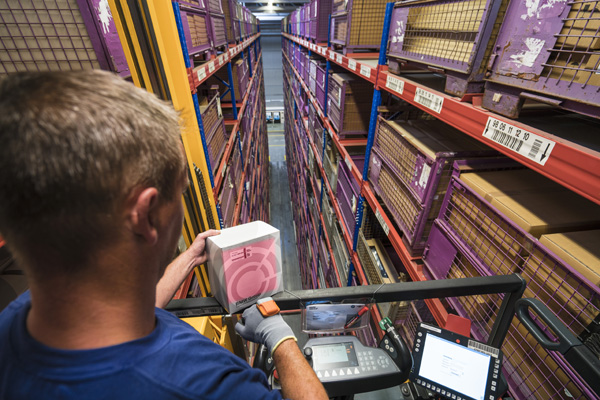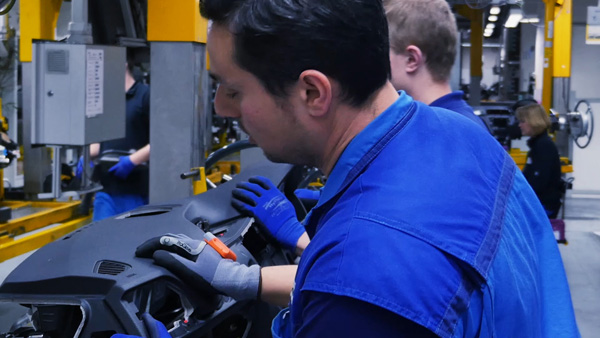How Workplace Safety Promotes Efficiency -【AGV, Logistic, Air Cargo, Supply Chain, Warehouse, ERP system, Logistic Management, Chinese Market 】
Warehouse & Logistics News | By Axel Schmidt, Senior Communications Manager, ProGlove

ProGlove’s MARK barcode scanner scanning a barcode in a warehouse scenario
The question of how logistics and supply chain managers may need to prepare for the next crisis on the horizon, or another pandemic, is critical. Today, flexibility is definitely a crucial prerequisite. As we’ve all seen through the Covid19 pandemic, organisations want to be in a position that enables them to set up, relocate or redesign workplaces quickly and respond to market needs with agility. The same goes for the underlying processes. But, as organisations get ready to deal with the future, what should they consider as they develop their operations?

ProGlove’s MARK barcode scanner in use on an assembly line
Prevent old habits from endangering employees

Axel Schmidt, Senior Communications Manager, ProGlove
A first key objective is to prevent employees from reverting back to old habits that could endanger them. In a Covid19 world, smart wearables can play an important role and enable social distancing onsite. Technologies, such as wearable scanners, can for instance provide organisations with an app that can connect the workers to their devices. The basic idea is fairly simple: the app detects when workers fall below the minimum social distance for too long. In response, it generates a message that the wearable device can output as a combination of acoustic, haptic and visual warning signals. Particularly in busy or noisy work environments, combined signals are extremely helpful for attracting employees’ attention and warning them. This type of technology is especially well suited to help workers at the assembly line or in logistics by providing this uncomplicated reminder to keep the right distance.
Removing process bottlenecks improves safety and productivity
Bottlenecks arise within companies’ processes due to external as well as internal conditions. For example, fluctuations in demand and dynamic market conditions represent major challenges for production. In addition, complex structures within technical processes, process organisation and logistics are also susceptible to errors and inefficiency. The more complex the internal structures, the more difficult it is to understand where and why bottlenecks occur. Long throughput times, underestimated forecast qualities regarding demand, or overfilled warehouses with semi-finished goods, are typical examples of the negative consequences that arise from a bottleneck – but they are often not the hurdle itself. Therefore, it is crucial to analyse what the original problem is that is impacting on other areas within production and logistics.
Optimising throughput time benefits the organisation
Throughput is crucial in both production and logistics. The calculation of throughput time starts at goods receipt and ends when the item is ready for delivery or leaves the goods issue area. A smooth material flow can optimise the throughput time and ensure a short delivery time. Throughput optimisation begins in the warehouse. The longer the goods take to pass through the processes, the higher the storage costs become. This also has a knock-on effect on the capital commitment.
It is not only the reduction of throughput times that offers companies added value. Quality also plays a decisive role in corporate success. In logistics, organisation via barcodes and scanners is a common method of identifying products and their position in the warehouse quickly and easily. By using a glove scanner, which also has an integrated display on the back of the hand, communications with employees is better managed. Employees wear the scanner directly over their work gloves and do not have to keep picking it up again and again. This is more ergonomic than a traditional scanner and reduces repetitive strain injuries too. In addition, it means, processing at terminals is no longer necessary, as the information can be sent and received directly to back office systems, enabling greater flexibility and less travel time for the worker.
Conclusion
As logistics teams and supply chain managers prepare for the future, in a world dominated by uncertainty and Covid, workplace health and safety has become increasingly important.
Technology, especially wearables, has an immense role to play in connecting the workforce and keeping it safe, productive and efficient; raising a question about whether ‘wearables’ is part of your future strategy as you seek to connect the workforce and digitise it?


